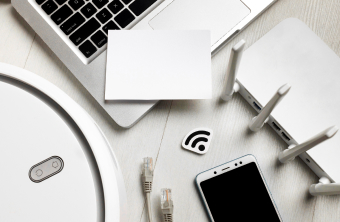

In the rapidly evolving digital landscape, the convergence of telecommunication and the Internet of Things (IoT) is revolutionizing how we interact with technology and our environment. The synergy between these two fields is paving the way for a connected world where smart devices communicate seamlessly, creating opportunities for enhanced efficiency, convenience, and innovation across various sectors. This article explores the critical role of telecommunication in enabling IoT connectivity, the benefits and applications of this integration, and the challenges and future prospects.
Telecommunication infrastructure forms the backbone of IoT, providing the essential connectivity that allows smart devices to communicate and share data. The integration of IoT with telecommunication networks involves several key technologies:
Telecommunication networks facilitate the continuous transmission of data between IoT devices and central systems for processing and analysis. This involves:
The integration of telecommunication and IoT is driving the development of smart cities, where various systems are interconnected to improve urban living conditions.
Telecommunication-enabled IoT is transforming healthcare by enhancing patient care, improving outcomes, and reducing costs.
Industrial IoT (IIoT) leverages telecommunication to enhance operational efficiency, productivity, and safety in manufacturing and industrial processes.
Telecommunication-enabled IoT is revolutionizing agriculture by improving resource management, crop yields, and sustainability.
Ensuring reliable connectivity and coverage, especially in rural and remote areas, remains a significant challenge. While 5G and satellite communication offer potential solutions, infrastructure deployment and maintenance can be costly and complex.
The proliferation of IoT devices increases the risk of cyberattacks and data breaches. Ensuring robust security measures, such as encryption, authentication, and regular updates, is crucial to protect sensitive data and maintain user trust.
The diverse range of IoT devices and communication protocols can lead to interoperability issues, hindering seamless integration and data exchange. Standardization efforts and the development of universal protocols are essential to address this challenge.
As the number of IoT devices grows, telecommunication networks must scale efficiently to handle increased data traffic and device density. This requires continuous investment in infrastructure and technology upgrades.
The rollout of 5G networks is expected to significantly enhance IoT connectivity, offering higher speeds, lower latency, and greater capacity. Future technologies, such as 6G, promise even more advanced capabilities, supporting the next generation of IoT applications.
Artificial intelligence (AI) and machine learning (ML) will play a crucial role in managing and analyzing the vast amounts of data generated by IoT devices. AI-driven insights will optimize operations, predict trends, and enable more intelligent decision-making.
The continued development of edge computing will reduce reliance on centralized cloud systems, improving response times and bandwidth efficiency. This will be particularly beneficial for applications requiring real-time data processing, such as autonomous vehicles and industrial automation.
As environmental concerns grow, there will be a focus on developing sustainable IoT solutions. This includes energy-efficient devices, renewable energy sources for IoT infrastructure, and technologies that minimize environmental impact.
The integration of telecommunication and IoT is driving a wave of innovation that is transforming industries, enhancing quality of life, and creating new opportunities for growth and development. While challenges such as connectivity, security, and interoperability remain, ongoing advancements in technology and strategic efforts to address these issues promise a future where the full potential of IoT can be realized. By leveraging the power of telecommunication to enable seamless connectivity for smart devices, we are paving the way for a more connected, efficient, and intelligent world.